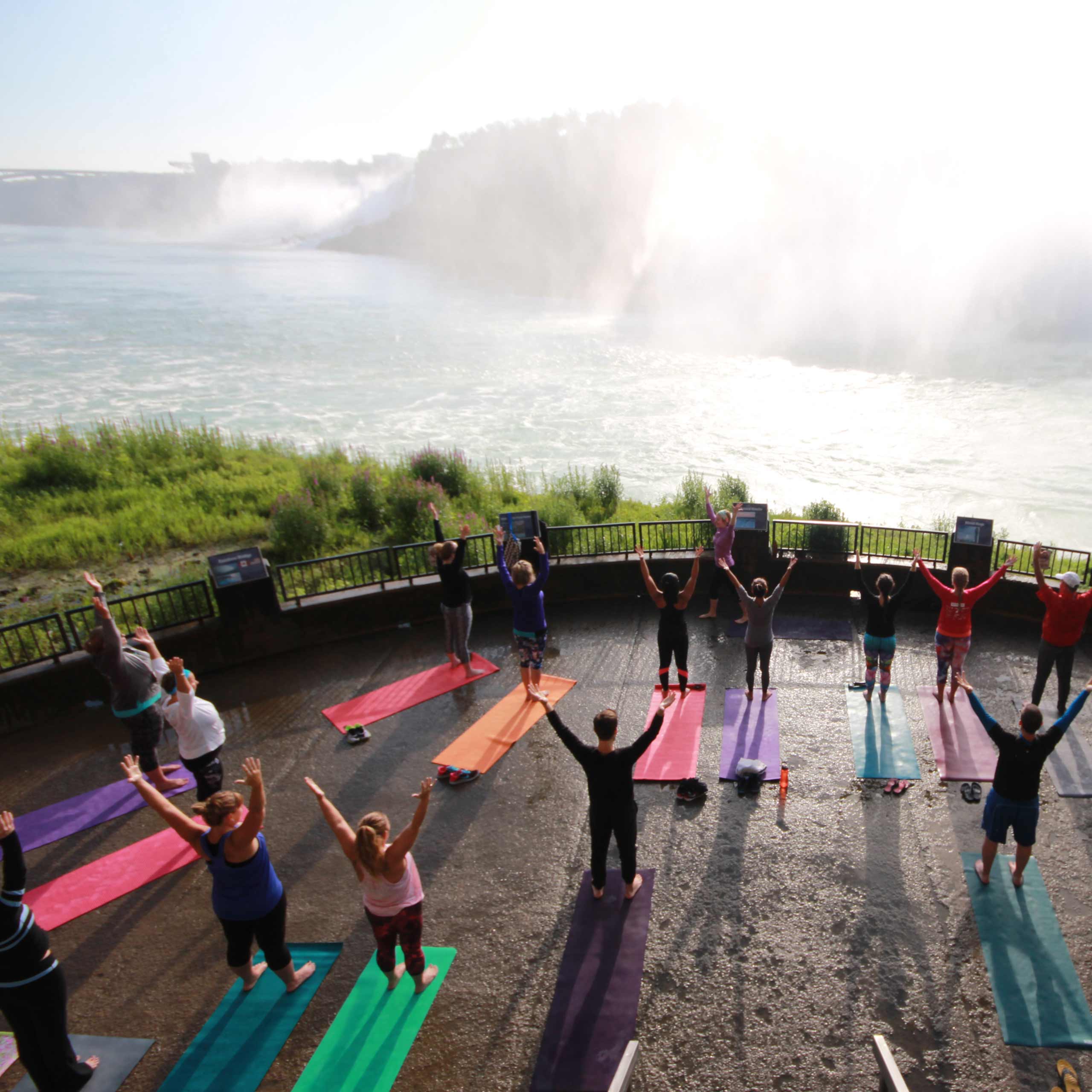History of Journey Behind the Falls
A global phenomenon…Journey Behind the Falls
For over 400 years, visitors have traveled from around the globe to experience the spectacle of the world’s most powerful waterfall. Today, Journey Behind the Falls safely welcomes millions of visitors each year through its gates, to get up close to the Horseshoe Falls, but looking back at the fascinating history of this iconic attraction reveals just how dangerous a proposition this once was.

Centuries Ago
At the turn of the 19th century, the only way for visitors to get up close to the base of Niagara Falls was to climb down the steep bank, over huge boulders, or down crude “ladders” created from fallen trees. Still, talk of the incredible spectacle of Niagara Falls was quickly spreading in North America and Europe with a steadily increasing number of visitors coming to see the falls each year.
Until the War of 1812, the area directly surrounding the brink of the falls was very sparsely populated, with virtually no visitor infrastructure in place. Local “entrepreneurs” looked to take advantage of this opportunity by constructing various visual blockades that would obstruct peoples ability to see the falls, while charging access to makeshift staircases that led down the gorge and towards the base of the falls.
Staircases
In the ensuing years, development moved quickly around the Table Rock area. The first enclosed stairs were built in 1818, and a spiral staircase was constructed in 1832 for visitors to enter what was then called the “Sheet of Falling Water” attraction.
Over the next fifty-years, a bitter rivalry between land owners/businessmen Thomas Barnett and Saul David would largely define the area. Both men continued to offer paid access to their respective staircases, however their fierce competition with, and personal dislike for each other resulted in a dangerous environment for visitors including instances of rocks being thrown from the top of the gorge at people on the stairs below and arson to the staircases. During this period of time, three separate staircases into the gorge were destroyed.
1885, The Niagara Parks Commission was created to maintain the area around the falls, and in 1887, it removed the existing deteriorating staircase and installed a water hydraulic powered elevator.


Early Tunnels
As the flow of water continued to break away large chunks of rock, the existing observation point for viewing behind the falls (which at this time was just a few meters below ground) was compromised. The decision was made to undertake a much larger project, and construct a 150 foot long tunnel far below the surface that would truly showcase to full force and volume of the Horseshoe Falls.
The first version of the tunnels opened in May 1889. While still crude by today’s standards, this iteration of was a significant step towards the attraction that exists today. Since the tunnels were pitch black, guides carried lanterns to escort their visitors safely to the open portal behind the rushing water.
Connection with Table Rock House
The original Table Rock House constructed by Saul Davis functioned as the park’s flagship visitor building upon the official opening of the park to the public on May 24th 1888. The building would see the addition of an elevator in 1902 paid for by the Ontario Power Company, who in exchange received exclusive use of the existing hydraulic lift system in order to transport their construction workers to the power station in the gorge below.
In 1925, work began on a new Table Rock House facility that would be much grander than its predecessor and would house among other amenities, a new elevator to the “Scenic Tunnels” attraction along with dressing rooms for visitors to get ready with heavy rubber rain coats and boots.
As the brink of the Falls continued to recede, tunnel extensions were made as required, until 1944 when a new tunnel was cut into the rock about 18 meters behind the original one. These concrete-lined, electricity-lit tunnels are still used today.


Lower Observation Platform
In the decades to come, visitation to the Scenic Tunnels attraction continued to grow exponentially and Niagara Parks sought opportunities to further expand on the attraction and increase its capacity.
In 1951, the lower observation platform was built to allow visitors a completely open air experience and unobstructed views of the Horseshoe Falls and Niagara Gorge. In 1994, the name of the Scenic Tunnels was changed to Journey Behind the Falls.
Modern Times
Centuries after the first crude staircases into the gorge were constructed, a visit to the base of the Horseshoe Falls remains at the top of the list for any Niagara Falls visitor.
In past years, Niagara Parks has offered new programs at Journey Behind the Falls, allowing guests to experience this hisotric attraction in a brand new way. Each summer, Night Lights allows for guests to enter the attraction past its usual closing time, and take in the spectacle of the nightly Falls Illumination and Fireworks shows from this incredible vantage point.
For those seeking an unforgettable health and wellness experience, the Namaste Niagara program offers beginner friendly morning yoga classes on weekend mornings in July and August.


 Close and
Close and